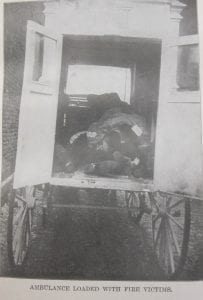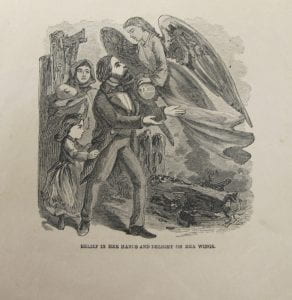Fire Prevention Week 2019
The history behind why Fire Prevention week started started with an increase in the number of fires in the 19th century, particularly the Great Chicago Fire of 1871 and the Chicago Theater fire of 1903. Here in Special Collections at Lehigh University there are a few books dating back to that time in Chicago’s history. The first one is The Great Chicago Theater Disaster by Marshall Everett. This book gives a detailed account of the The Iroquois Theater, where the fire occurred. It was said that there were no actual floor plans of the theater and that there was only one exit, but the theater could hold up to 2,200 people. The whole building was not up to code and on the day of the fire, every seat was filled. The start of the fire was caused by an electrical short circuit. When trying to flee from the fire, many of the emergency exits were locked and the usher wouldn’t open the door until someone forced it open. This was the deadliest single building fire in American history.
The Chicago Fire has an interesting legend about how a cow on the farm of Patrick and Catherine O’Leary started the fire from kicking over a lantern in the barn. Mrs. O’Leary’s cow starting the fire has since been disproved, with alternative explanations including and exploding comet. The fire burned for two days and killed 300 people. The book Chicago The Great Conflagration by Elias Colbert and Everett Chamberlin goes through the whole history of the land of Chicago as well as the creation of the city itself. The book focuses on the background history of Chicago for the first 180 pages before getting to the science of the fire. The scientific explanations in the book are outdated, including the fire being caused by sun spot caused droughts and dryness in the city itself. While the book isn’t accurate by modern standards, it provides an interesting retelling of the history of Chicago.
The last book is a little volume called Mrs. Leary’s Cow: A Legend of Chicago, which is ironically written by the Black River Fire Insurance Company as a way to tell a story. The book is similar to a children’s book in the way it rhymes and the high quantity of images. On top of that fire insurance companies also created Sanborn maps that would map out cities to measure the liability the insurance would face in the case of a fire. Lehigh holds the Sanborn map books for Bethlehem and Allentown, while Penn State has digitized the maps for all of Pennsylvania.






